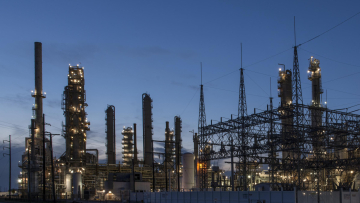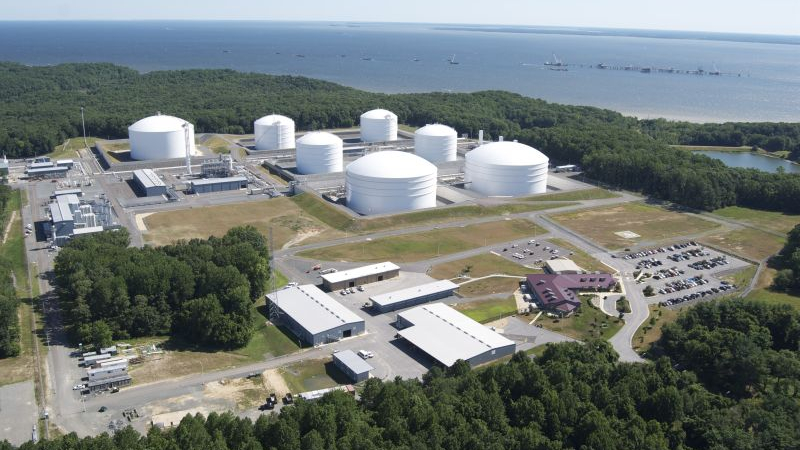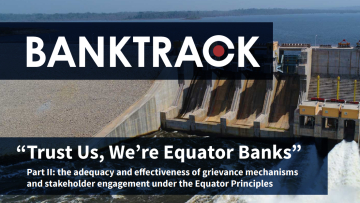
Project – On record
This profile is no longer actively maintained, with the information now possibly out of date
Project – On record
This profile is no longer actively maintained, with the information now possibly out of dateWhat must happen
Potential investors and banks should avoid participation in DM's IPO sale. There are serious environmental, corporate governance and permitting delay risk associated with the sole asset of DM, the Cove Point LNG export terminal.
| Sectors | LNG Terminal |
| Location |
|
| Status |
Planning
Design
Agreement
Construction
Operation
Closure
Decommission
|
| Website | https://www.dom.com/covepoint |
|
|
This project has been identified as an Equator Project |
Dominion is constructing liquefaction facilities for exporting liquefied natural gas (LNG) at its existing Cove Point Terminal on the Chesapeake Bay in Maryland. The proposed liquefaction facilities, combined with existing facilities, will provide a bi-directional service of import and export of LNG at the Dominion Cove Point LNG Terminal. The project requires an investment of USD 3.8 billion.
Social and human rights impacts
More dangerous fracking If the Cove Point export facility is approved, it will provide a strong economic incentive for companies to expand fracking across our region, including in Maryland, where no drilling yet occurs. In other states, the expansion of fracking has caused drinking water contamination, air pollution, illnesses and even earthquakes.
Risking the Chesapeake Bay economy and ecology The Chesapeake Bay supports more than a trillion dollars in economic activity through seafood and tourism. Exporting gas from Cove Point would increase traffic of massive, 1,000-foot long tankers carrying volatile, potentially explosive liquid fuel. Harmful emissions from those tankers would worsen local air quality. They would also dump billions of gallons of dirty ballast wastewater into the Bay each year. Construction of the gas liquefaction facility would require the clearing of forests and barging in of heavy construction materials along the Patuxent River, further threatening the network of rivers, wetlands and forests that attract tourists and support rare species of plants, animals and migratory birds.
A web of destructive fossil fuel architecture To support the export of LNG on the East Coast, new pipelines will be needed throughout the Marcellus shale states to get gas from new drilling wells to the export terminal. Pipelines, which inevitably leak and rupture causing dangerous explosions and fires, would snake through our waterways, backyards and farms. Noisy, polluting compressor stations could be required from Fairfax, Virginia to Frederick, Maryland and everywhere in between to keep gas moving through pipelines. Residents of the small, rural town of Myersville, Maryland are already fighting a 16,000-horsepower compressor station that Dominion wants to construct, which would be located just a mile from their elementary school.
Making natural gas more expensive at home If all the proposed LNG export projects in the U.S. are approved, the result would be the export of more than 40 percent of our current production of natural gas. This means more competition at home, and thus, higher prices for domestic consumers and industries.
According to the NERA Economic Consulting Analysis commissioned by the U.S. Department of Energy, exporting natural gas harms every major sector of the U.S. economy, except the gas industry. In the graphic above, negative numbers represent economic loss, positive numbers equal economic gain.
Environmental and climate impacts
Consequences for climate change Looking at the big picture impacts of fracking, the International Energy Agency concludes that a worldwide reliance on fracked gas would lead to six degrees Fahrenheit of atmospheric warming, in other words, cooking the planet. LNG exports are even more energy intensive than gas drilled and burned at home. After the gas is transported, liquefied for export and then re-gasified to burn, the lifecycle emissions of exported LNG are 15 percent higher than gas consumed domestically.
To power liquefying and cooling operations, Cove Point would require construction of a new gas plant on-site that would be Maryland's fourth-largest climate polluter. From start to finish of the LNG export process, Cove Point would trigger more planet-heating pollution than Maryland's entire fleet of seven coal-fired power plants combined.
If we're going to preserve a safe climate, we can't open the floodgates to fracked gas exports on the East Coast-just like we can't build the Keystone XL tar sands oil pipeline to the Gulf Coast or new coal export terminals on the West Coast. We can and must invest instead in clean energy, making our region a leader in offshore wind power, new solar installations and energy efficiency, technologies that will create jobs and grow our economy permanently and safely.
The new liquefaction facility that Dominion would have to build on-site to process gas for export would emit more heat-trapping carbon dioxide than all but three of the state's existing coal plants. In all, given the energy-intensive process of extracting, transporting and processing gas for export, Cove Point would trigger more greenhouse gas emissions than any other single source of climate pollution in Maryland.
Other impacts
Financial aspects
- Dominion Midstream is undiversified: Cove Point is its sole cash generating asset;
- Cove Point's largest customer represents approximately 72% of the total transportation and storage revenues, and for the Liquefaction Project there are contracts with only two customers;
- The trend in federal environmental regulations could have a material adverse effect on Cove Point's operations and financial position;
- The location of Cove Point is vulnerable to climate threats;
- Unless the Liquefaction Project is completed, Cove Point is not expected to generate sufficient cash flows to pay distributions to Dominion Midstream in full, which makes it unlikely for Dominion Midstream to make payments to its unitholders;
- Unitholders have limited voting power and are last in line to receive cash distributions;
- There are no obligations to make cash distributions to unitholders;
- Also without cash distribution, tax payment by unitholders on their share of Dominion Midstream's taxable income is required;
- Dominion Resources will be the ultimate owner of the general partner of Dominion Midstream and will provide all of the necessary funding. No agreement requires Dominion Resources to pursue a business strategy that favours Dominion Midstream and its common unitholders. This constitutes a clear conflict of interest;
- Barclays, Citigroup and JP Morgan Chase are exposed as a lender to Dominion Resources and at the same time are involved in underwriting the IPO. This constitutes a clear conflict of interest.
- Final permits and governmental approval for the Liquefaction Project have not been received and there is a lot of resistance from multiple angles, making further project delay likely.
Barclays Capital (United Kingdom) and the American investment banks Citigroup Global Markets and J.P. Morgan Securities are acting as the underwriters and the joint book-running managers of this offering (Source: Dominion Midstream Partners, "Amendment No. 1 to Form S-1 Registration Statement Under The Securities Act Of 1933", Dominion Midstream Partners, 21 May 2014.)
Dominion Energy
United StatesMaryland Rises to Stop Cove Point
2017
2017-03-13 00:00:00 | Dominion Cove LNG project expected to be completed in 2017
The massive USD 3.8 billion project aimed at making a Southern Maryland natural gas plant a major player in product export is rolling toward completion, utility officials reported (source The BayNet.com)
2014
2014-10-20 00:00:00 | IPO Closes
Dominion Midstream Partners announced the closing of its initial public offering. Barclays, Citigroup, J.P. Morgan, BofA Merrill Lynch, Goldman, Sachs & Co., UBS Investment Bank and Morgan Stanley acted as joint book-running managers for the offering. RBC Capital Markets and Scotiabank / Howard Weil acted as co-managers for the offering. See the company's press release.


